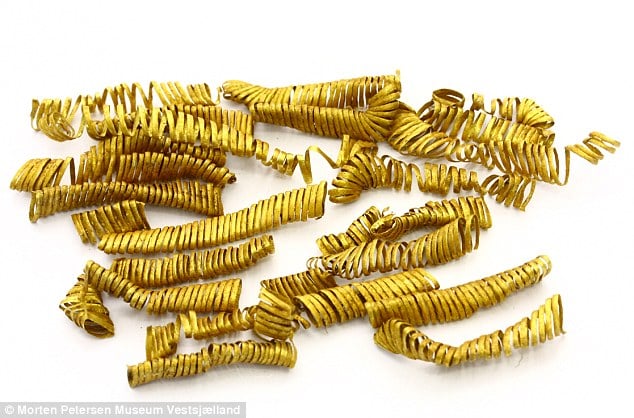
Unearthed gold spirals dating to 900 to 700 B.C.
Photo: via The Local.
Archaeologists have unearthed a cache of 2,000 gold spirals that date to between 900 and 700 BC. They were found in the Boeslunde region of Denmark.
They were found by Flemming Kaul, a curator at the National Musuem of Denmark, and by Kirsten Christensen, a curator at the Museum Vestsjaelland, a fusion of Danish museums that covers 11 regions.
Experts are not positive what the spirals were for, but each is made from flattened gold wire. They believe they may have formed part of a ceremonial headdress for a priestly king and were designed to reflect sunlight.
Kaul told the Daily Mail, “Maybe the spirals were attached to cords which served as a small fringe on a hat or a parasol.” He added that they may also have been braided into hair or embroidered on clothing.
A few years ago, a local amateur archaeologist discovered four heavy gold arm rings, called oath rings, close to where the latest cache was found. This raised the idea that more gold could be buried nearby.
Experts from the Museum Vestsjaelland discovered just a few spirals at first—the report does not specify when—but discovered more later. The team also found dress pins that reportedly allowed them to date the spirals.
Many of the spirals were buried in a fur-lined wooden box and were found in a large lump, beneath which were black flakes of birch pitch used to hold a leather lining.
Experts said they were not surprised to find these items of precious gold at Boeslunde since the area has produced some of the largest gold finds from the Bronze age in Northern Europe. Kaul says he believes that there is more prehistoric gold to be found in the area and excavations there will continue.
For related coverage, see:
Long-Lost Masterpiece by Ingres Discovered in Hospital Attic in France
2,000 Year Old Bath Discovered Under Family Home in Israel